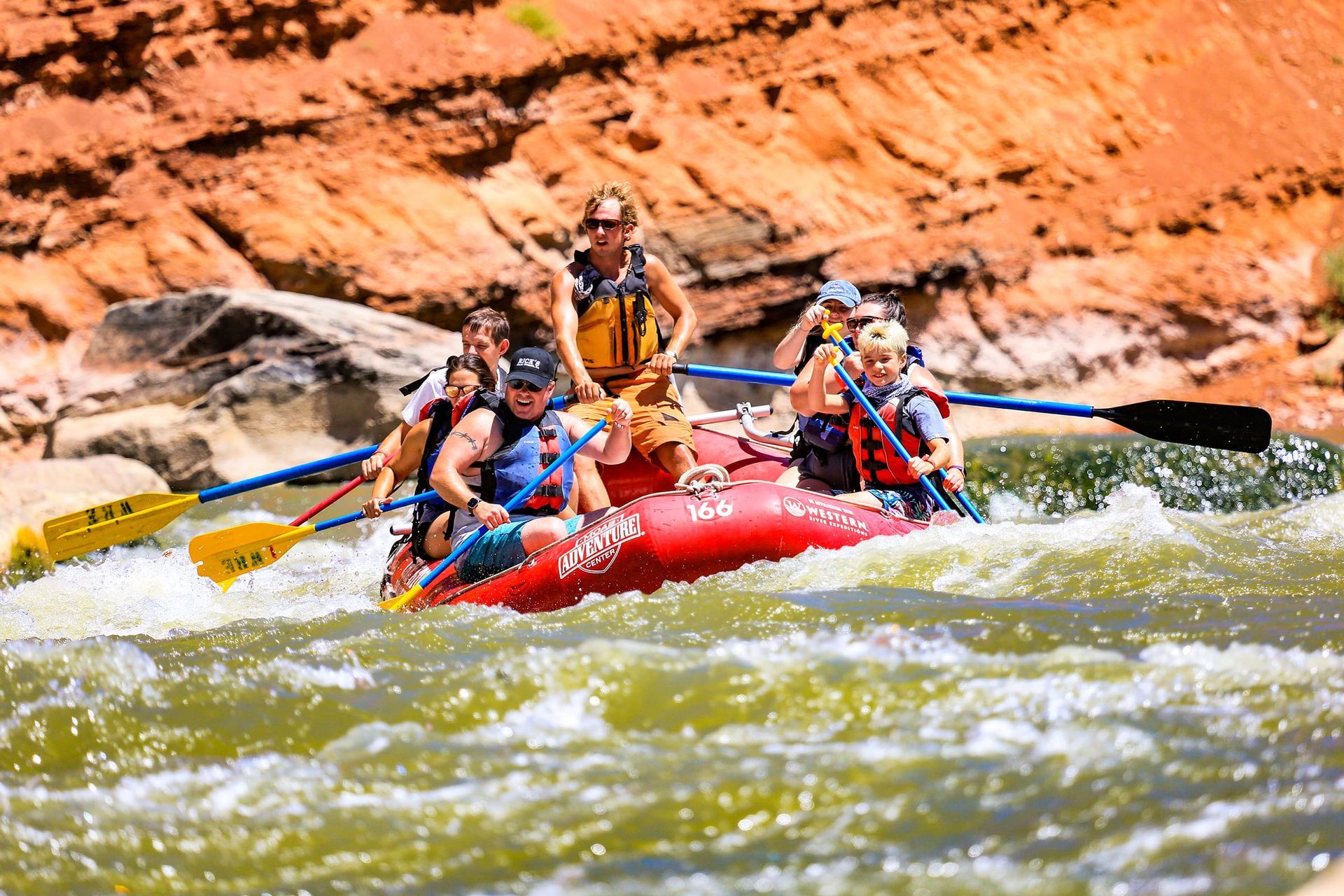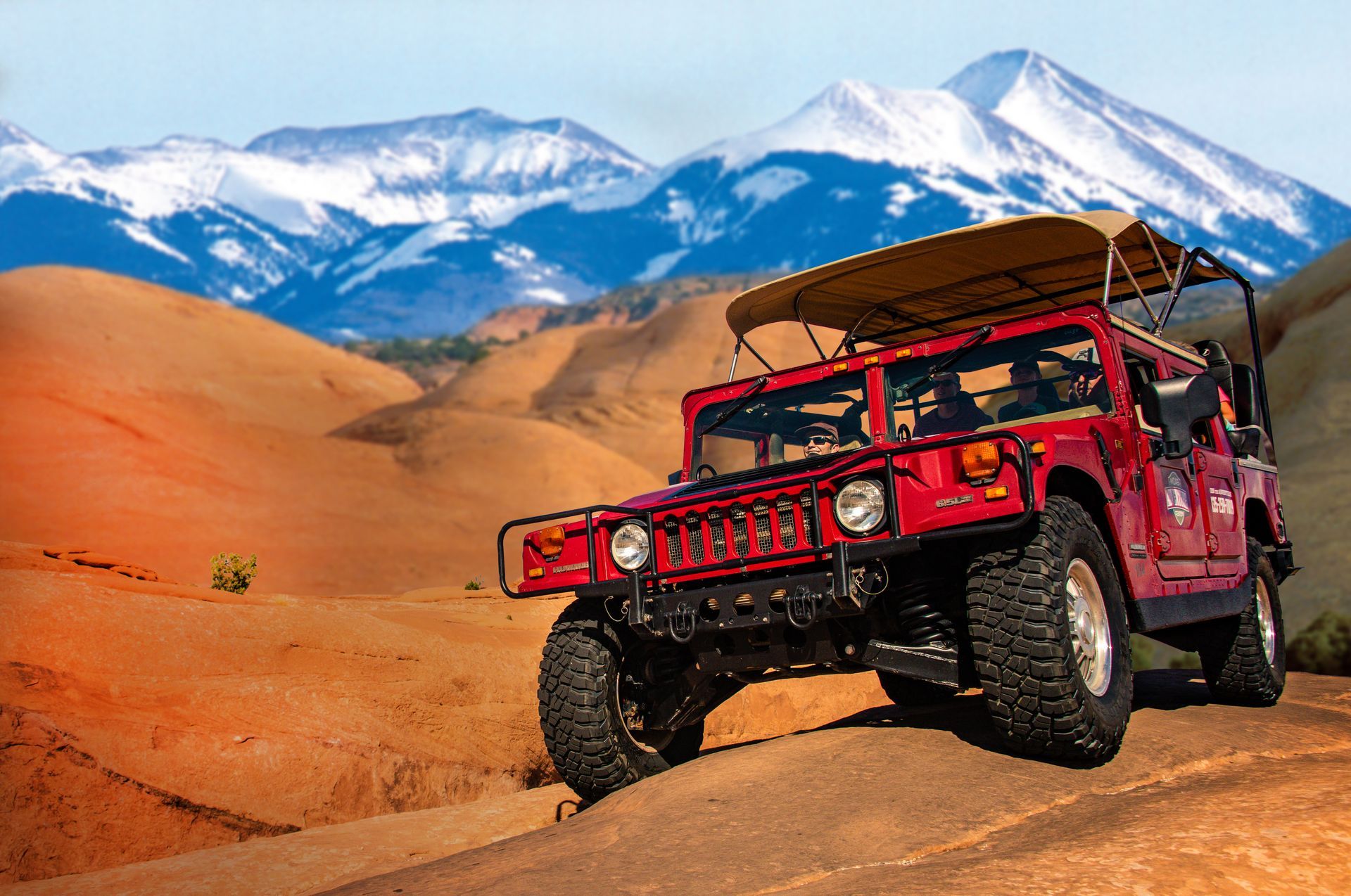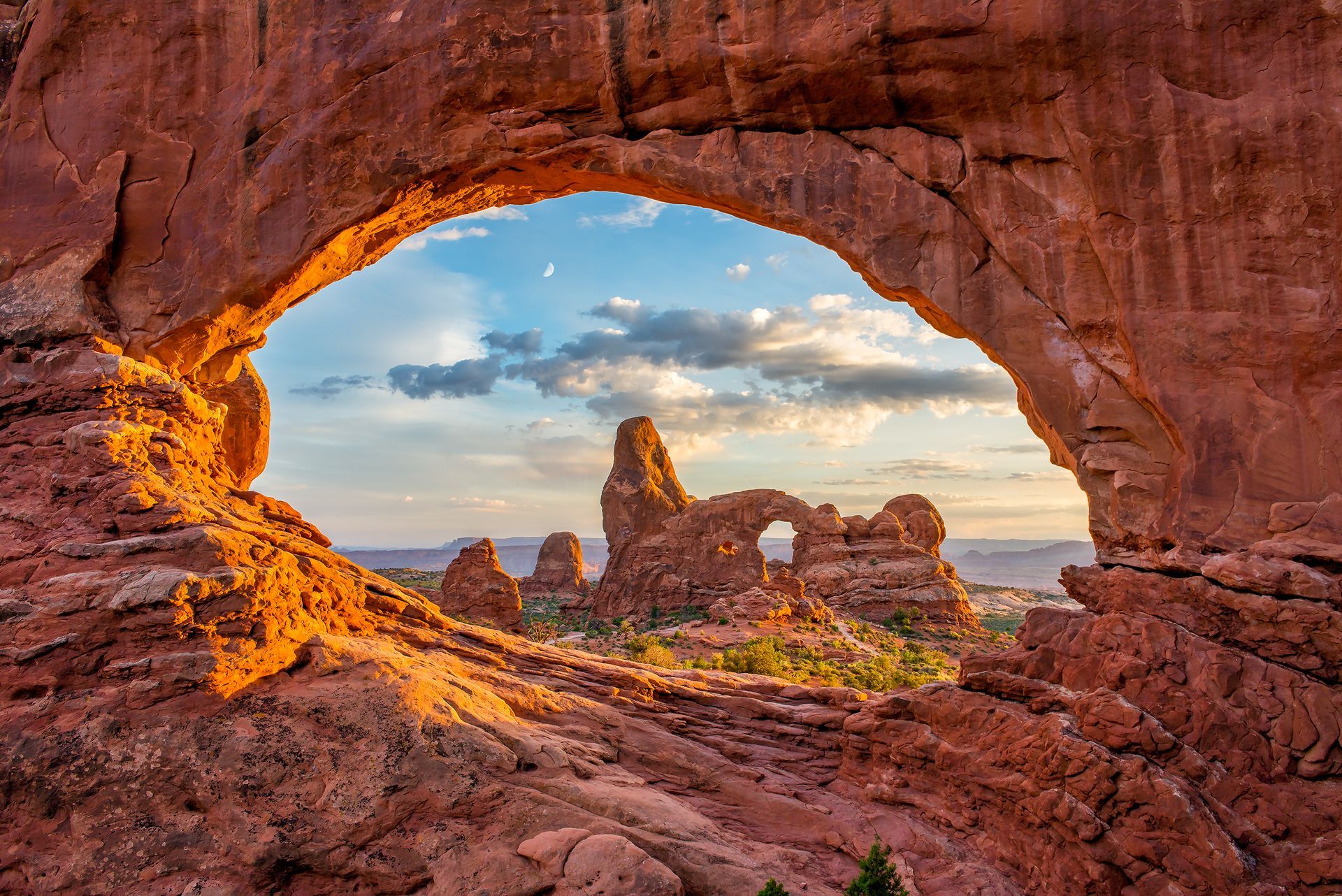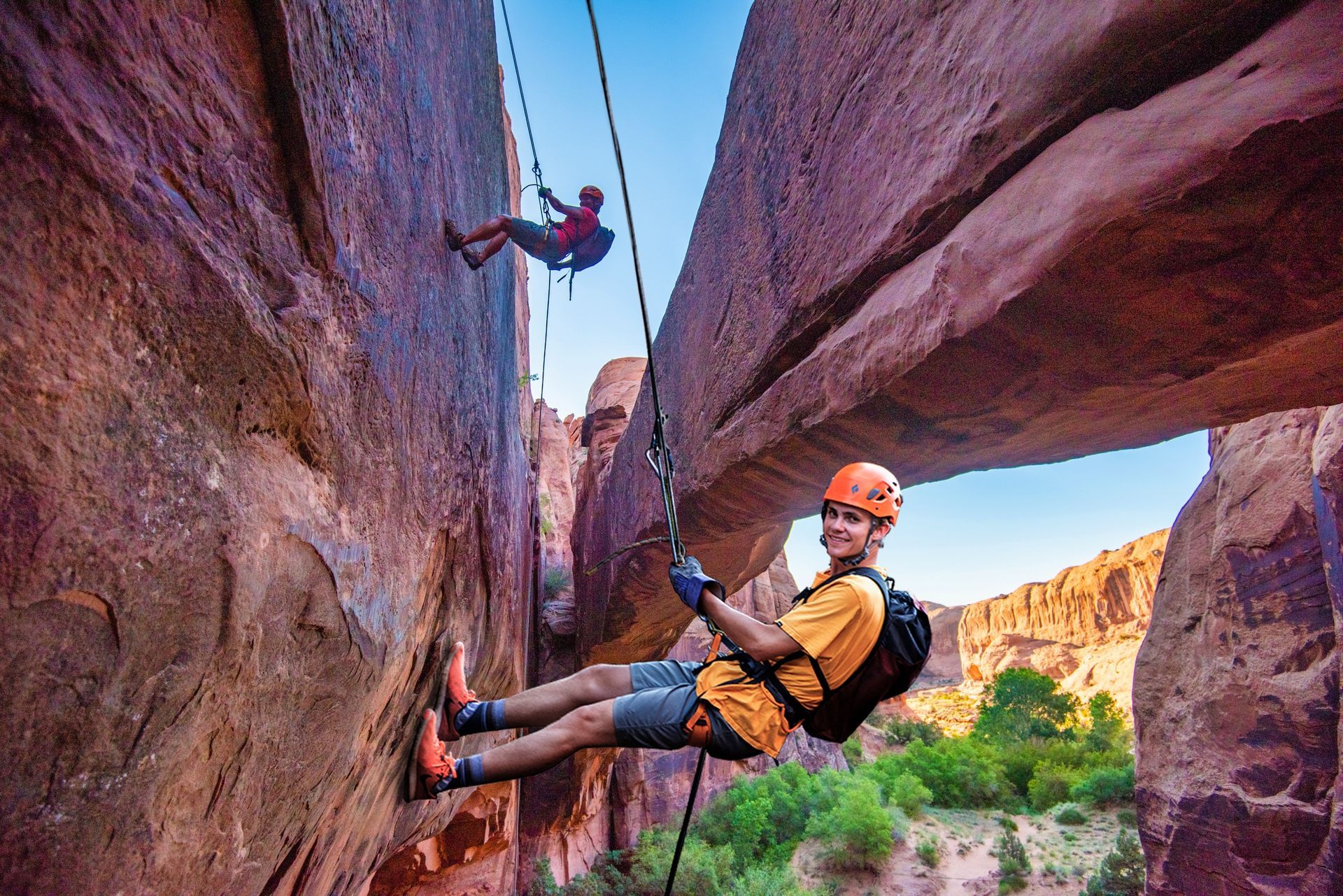MOAB, UTAH
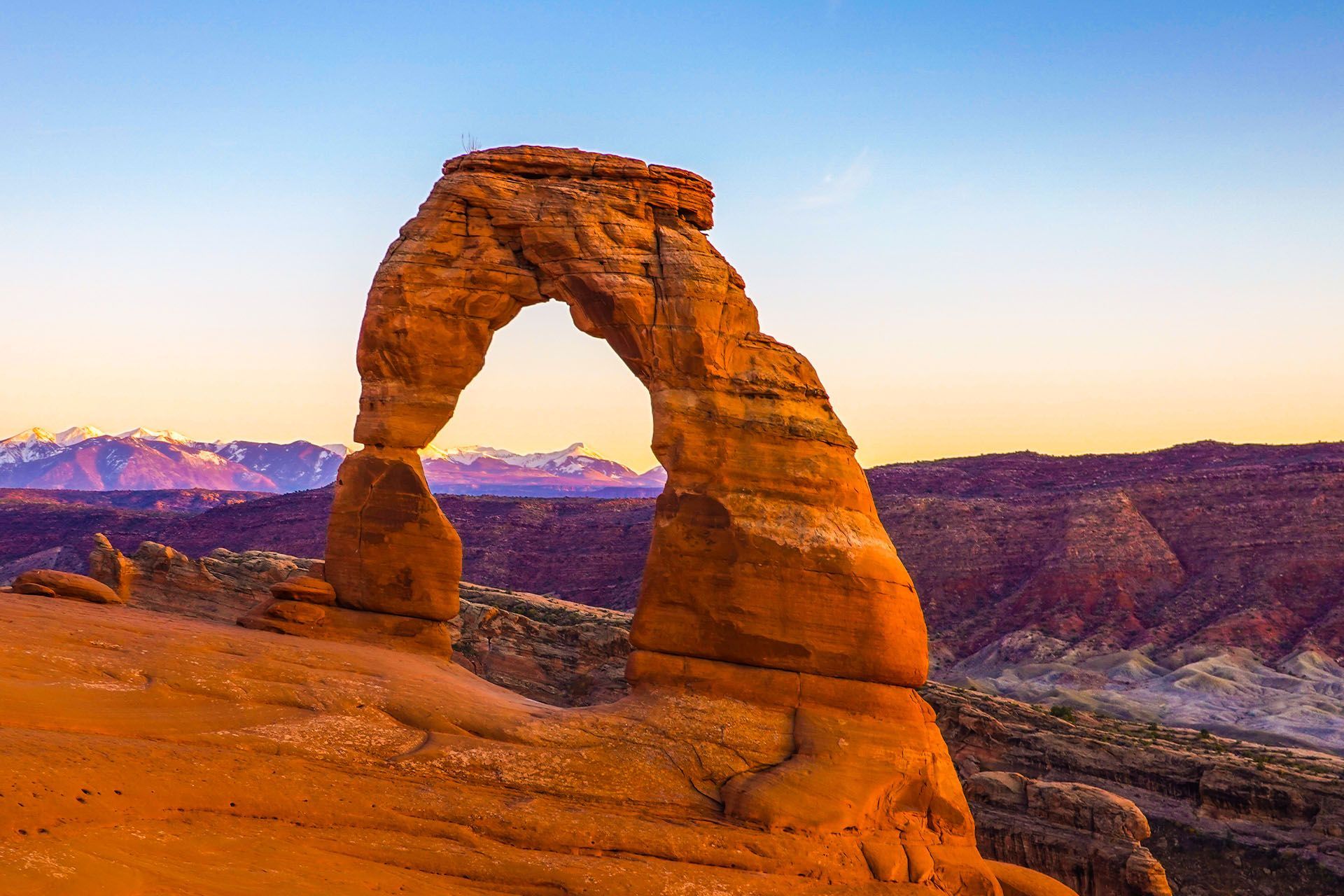
Season by Season: When to Visit Arches
The best time to visit
Arches National Park is during
spring (March–May) and
fall (September–October) when temperatures are mild, skies are clear, and crowds are smaller. These seasons are ideal for hiking and photography, but
summer (June–August) is also the most popular for family travel, river rafting, and guided tours from
Moab, Utah, which operates year-round. Each season carries its own magic. Here's the rundown.
Best Time of Day to Visit Arches
Early morning and late afternoon are the most rewarding times to explore. Not only is the light ideal for photography, but temperatures are cooler and crowds are lighter. If you’re visiting on your own, arrive before sunrise or after 4:00 p.m. You won't need an Arches reservation and parking is generally less stressful. If you’d rather relax and let someone else handle the reservations, parking, and logistics, join our Morning Arches Tour or Sunset Arches Tour. Our guides know how to time each stop perfectly, and you'll learn a lot more about this incredible park.

Visiting Arches During the Spring (March–May)
Spring is one of the best times to visit Arches National Park. Daytime temperatures average 60–80°F. It's perfect for hiking, exploring viewpoints, and photographing wildflowers that bloom among the red rocks. Mornings and evenings are cool, and the park feels alive with color and light. It’s also a great season to combine an
Arches National Park tour with a gentle
Colorado River rafting trip before the summer rush.
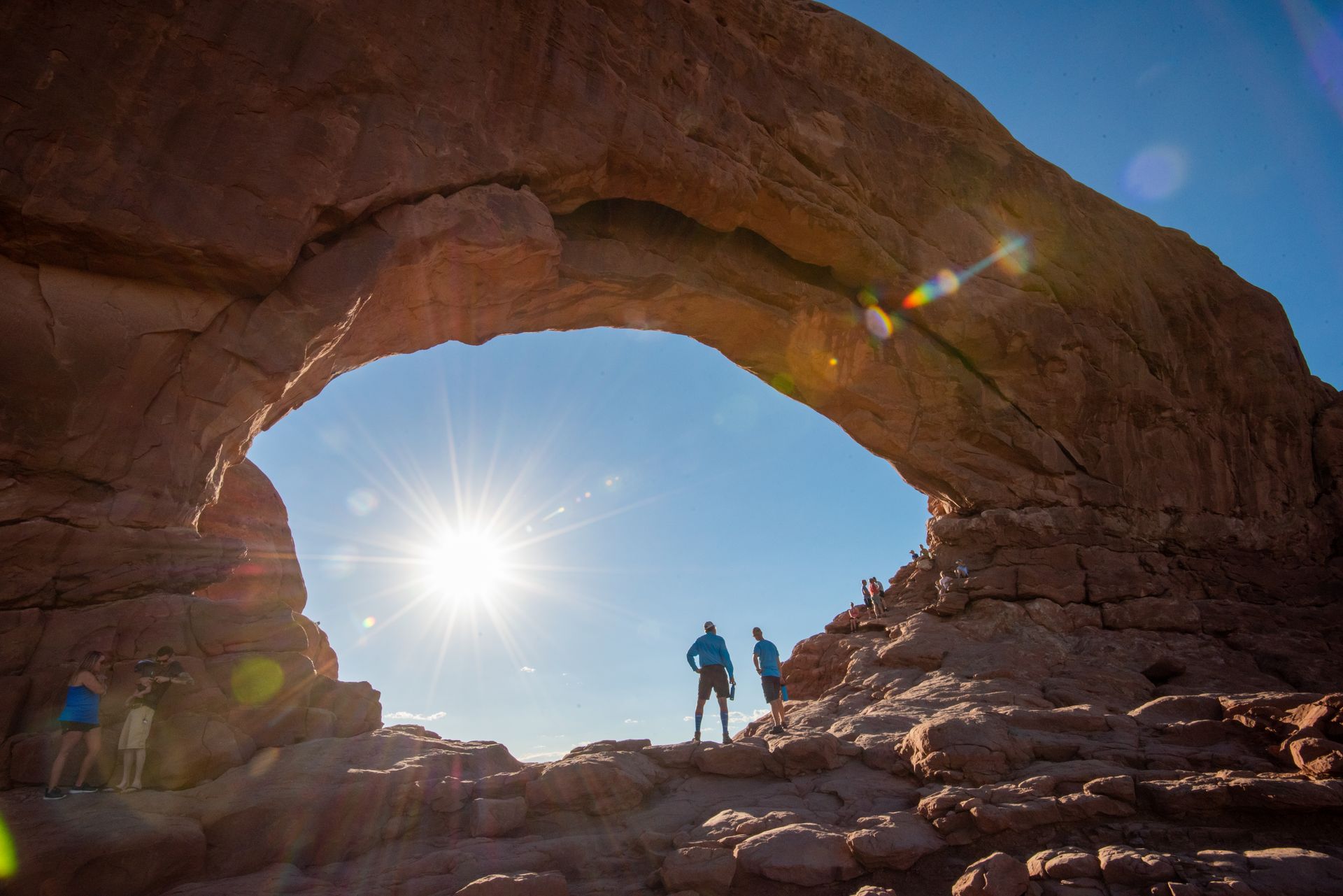
Visiting Arches During the Summer (June–August)
Summer brings long days and warm nights, and yes, heat. Temperatures can climb over 100°F during the midday hours, but early mornings and late afternoons or evenings are beautiful times to explore. Our
Arches National Park Sunset Tour is a favorite among guests who want to see the park’s highlights when the rocks glow in deep reds and golds. Many families visit during summer break, making it an ideal time to pair your Arches tour with an
Off-Road Hummer Tour or
river float for a refreshing balance of adventure and relaxation.
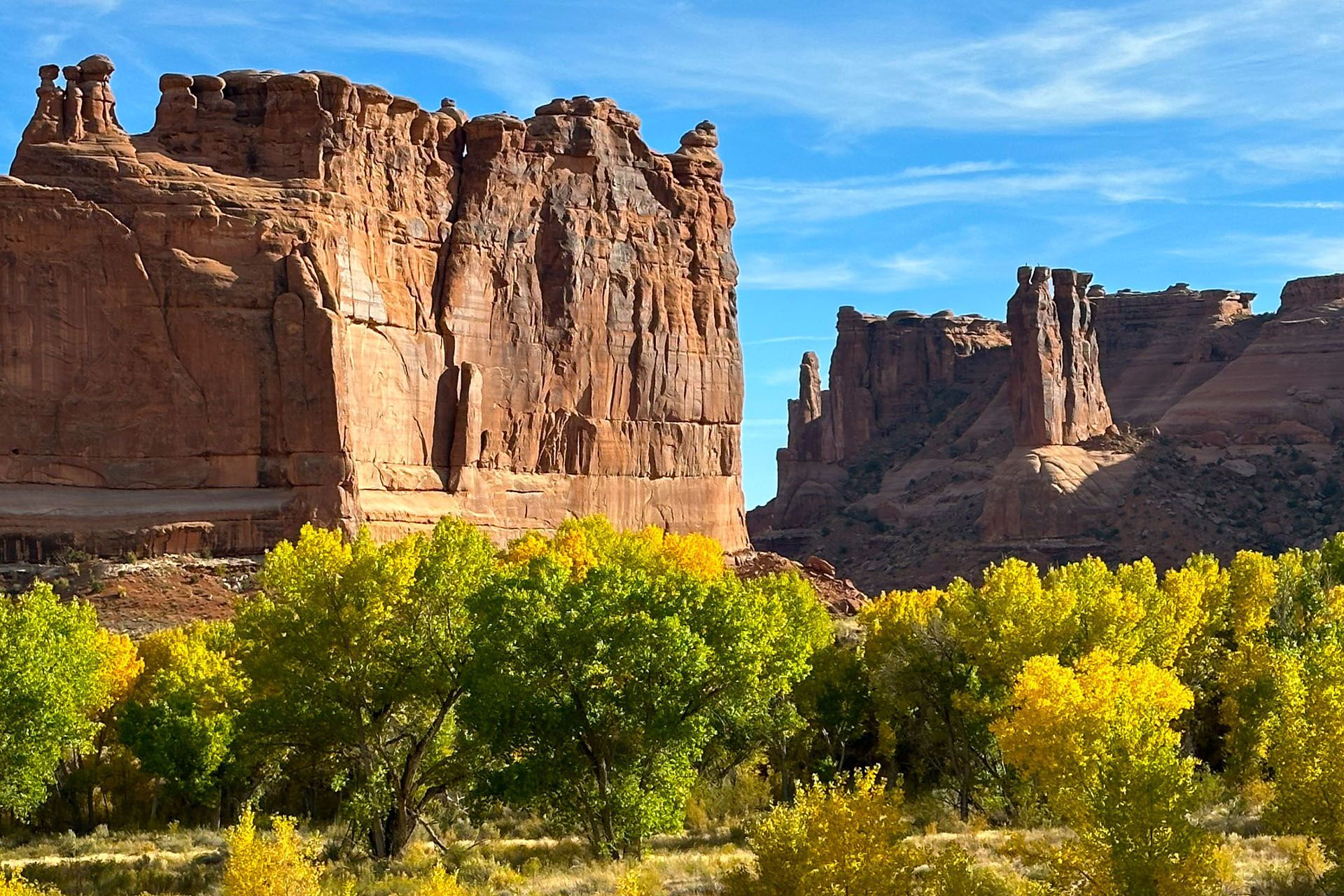
Visiting Arches During the Fall (September–November)
Fall rivals spring as the best season for comfort and color. Temperatures cool to the 70s and 80s, and the crowds thin after Labor Day. You’ll enjoy golden light, crisp mornings, and the chance to photograph arches against deep blue skies. It’s a favorite season for photographers and first-time visitors alike, and a perfect time to enjoy both a
morning Arches tour and a
sunset Hummer ride on the same day.
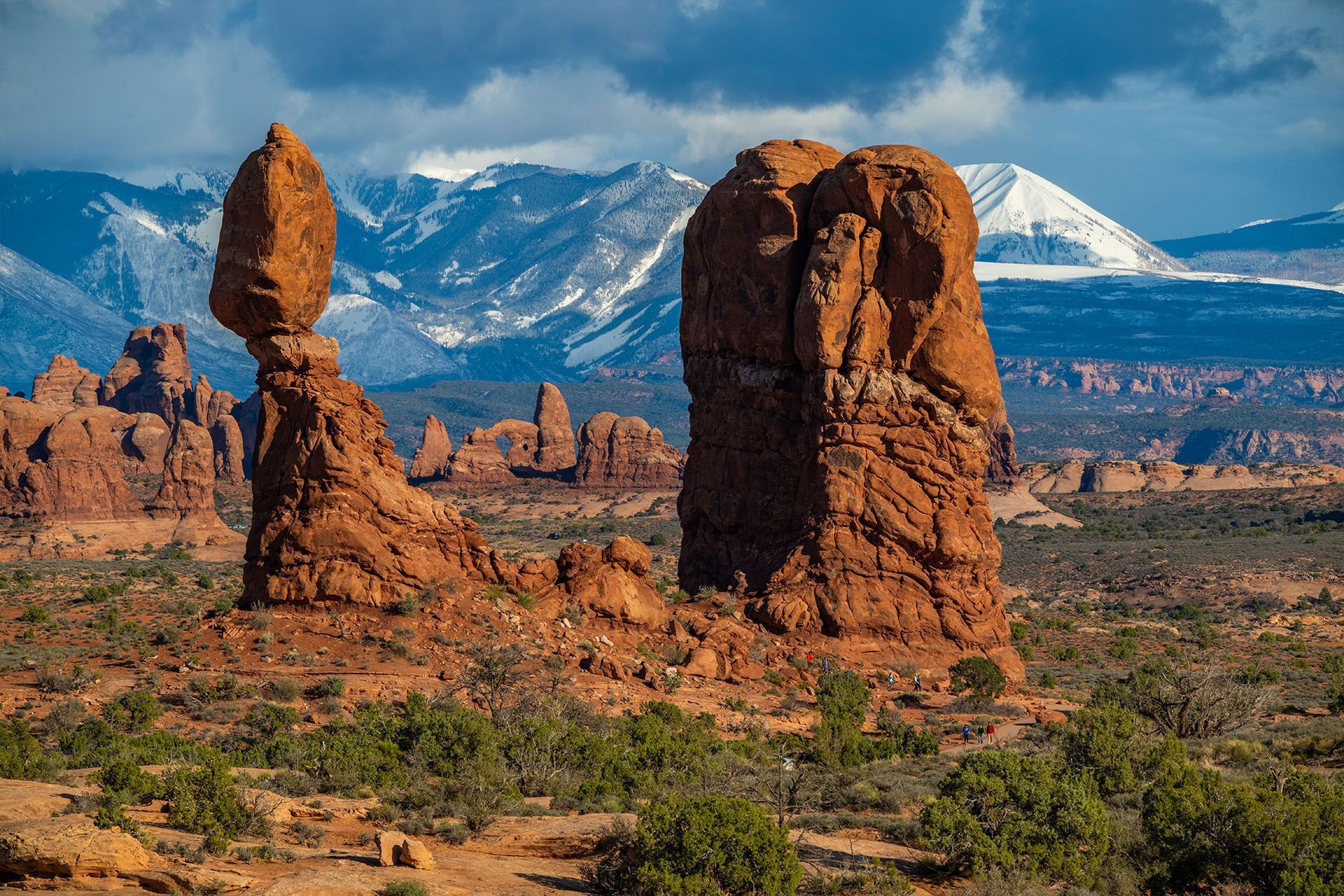
Visiting Arches During the Winter (December–February)
Winter is the park’s quietest season, offering peace and solitude rarely found during the rest of the year. Occasional snow dusts the red rocks, creating surreal photo opportunities. Days are cool, nights are cold, and the park’s popular trails, like Delicate Arch and The Windows, are blissfully uncrowded. Many visitors pair a
private winter Arches tour with a scenic
flight over Arches and Canyonlands for breathtaking views without the cold hike.
Explore Arches National Park
- Tours in Arches National Park
- Timed-Entry Tickets & Reservations
- Driving Through Arches National Park
- Best Time to Visit Arches
- Arches National Park Weather
- Camping in Arches National Park
- Lodging Near Arches
- Best Hikes in Arches
- Pictures of Arches National Park
- Facts about Arches
- How are Arches Formed
- Arches National Park Map
Frequently Asked Questions
Is Arches National Park open year-round?
Yes! Arches National Park is open 24 hours a day, year-round. Each season brings its own advantages. From colorful spring wildflowers and golden fall light to quiet winter trails. Guided tours operate throughout the year, with sunrise and sunset times adjusted seasonally for the best experience.
When is the most popular time to visit Arches National Park?
Spring (March–May) and fall (September–October) are the most popular times because of the comfortable weather and ideal lighting for photography. These months also make it easy to pair your Arches visit with other adventures like rafting, canyoneering, or Hummer tours while temperatures are mild.
What is the best month to visit Arches for photography?
April, May, September, and October are the best months for photography thanks to soft light, fewer crowds, and mild weather. Sunrise and sunset cast long shadows across the red rocks, making Delicate Arch, Balanced Rock, and The Windows section especially photogenic.
How many days do I need to see Arches National Park?
You can see the main highlights in half a day, but spending a full day (or two) allows you to experience more trails and viewpoints without rushing.
Can I visit both Arches and Canyonlands in the same day?
Yes, if you plan carefully. The two parks are about 30 minutes apart. You can visit the Windows Section and Delicate Arch in the morning, then drive to Canyonlands’ Island in the Sky to see Mesa Arch and Grand View Point in the afternoon. Or, if you’re short on time, book an Arches & Canyonlands combination flight for an incredible aerial overview of both in just over an hour.
Not finding what you're looking for?
Most Popular Arches National Park Tours
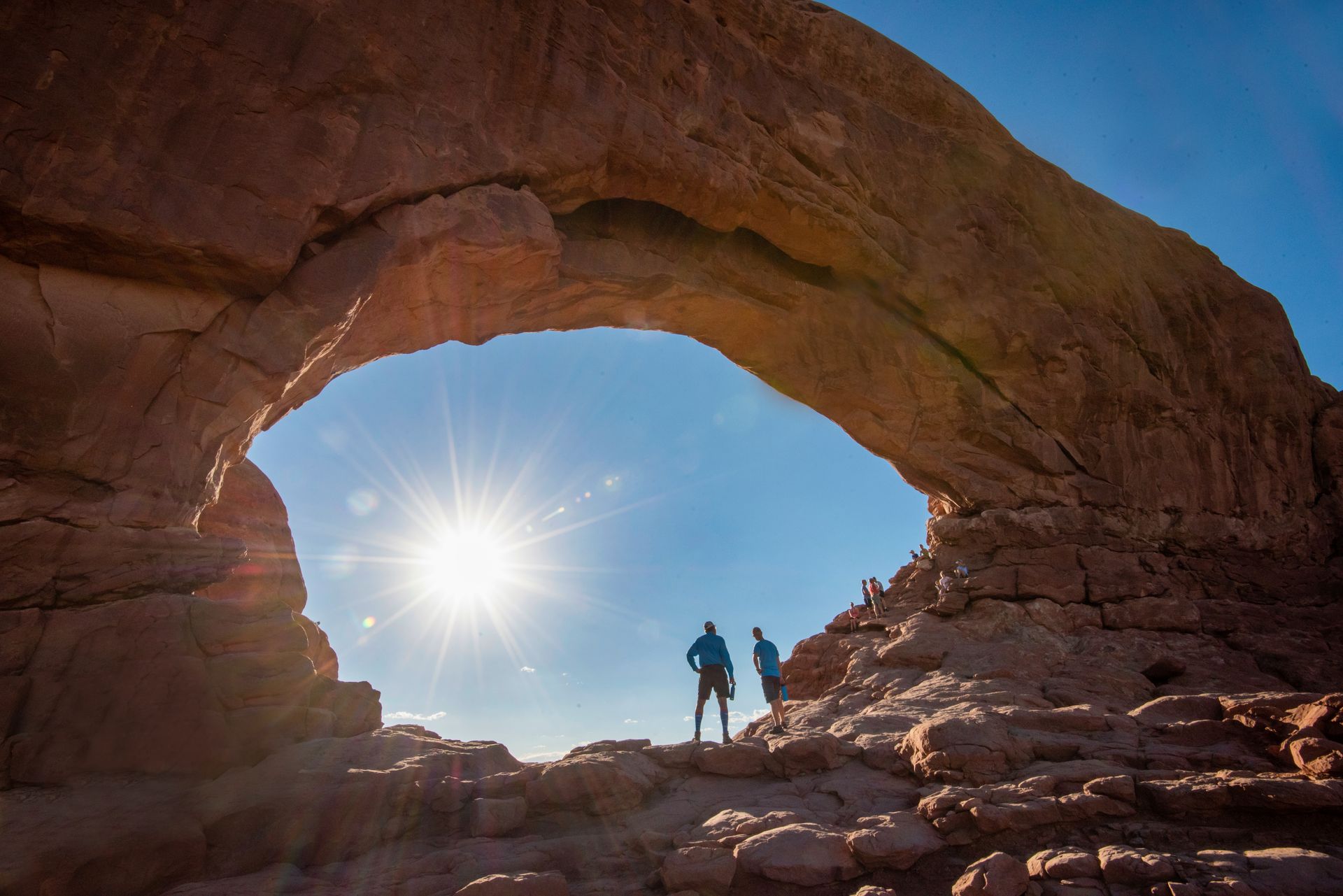
VIP access to Arches National Park: Expert guides, iconic sights, & mantle-worthy family photos without the hassle of parking or missing key sights.
- Duration: ~4 hrs
- Departures: Morning
- Season: Year Round
ADULTS 13+
$114
YOUTH 5-12
$93
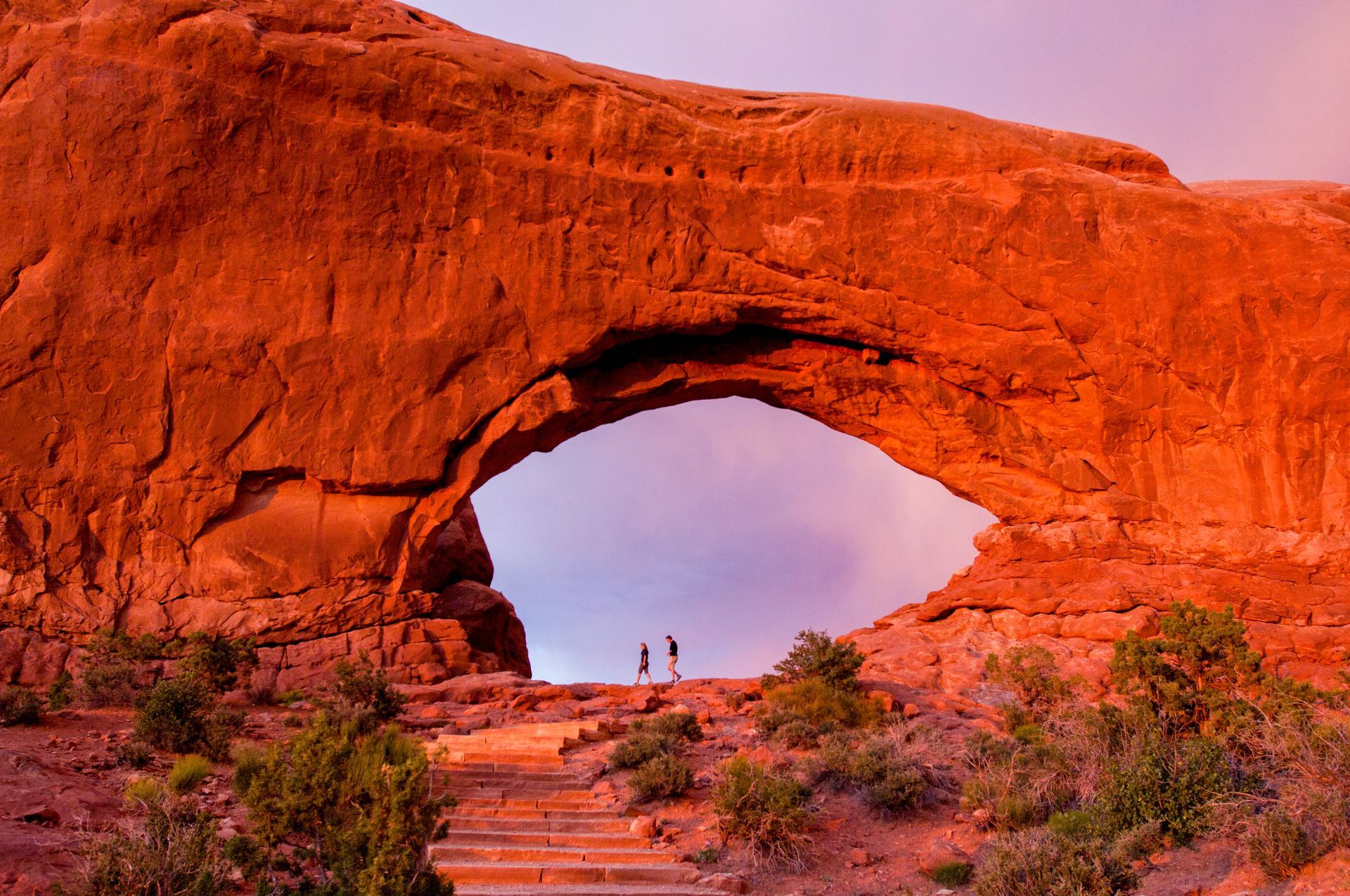
Witness Arches at its most magical: Golden hour light, fewer crowds, and fascinating stories shared by guides who bring the landscape to life.
- Duration: ~4 hrs
- Departures: Evening
- Season: Year Round
ADULTS 13+
$114
YOUTH 5-12
$93
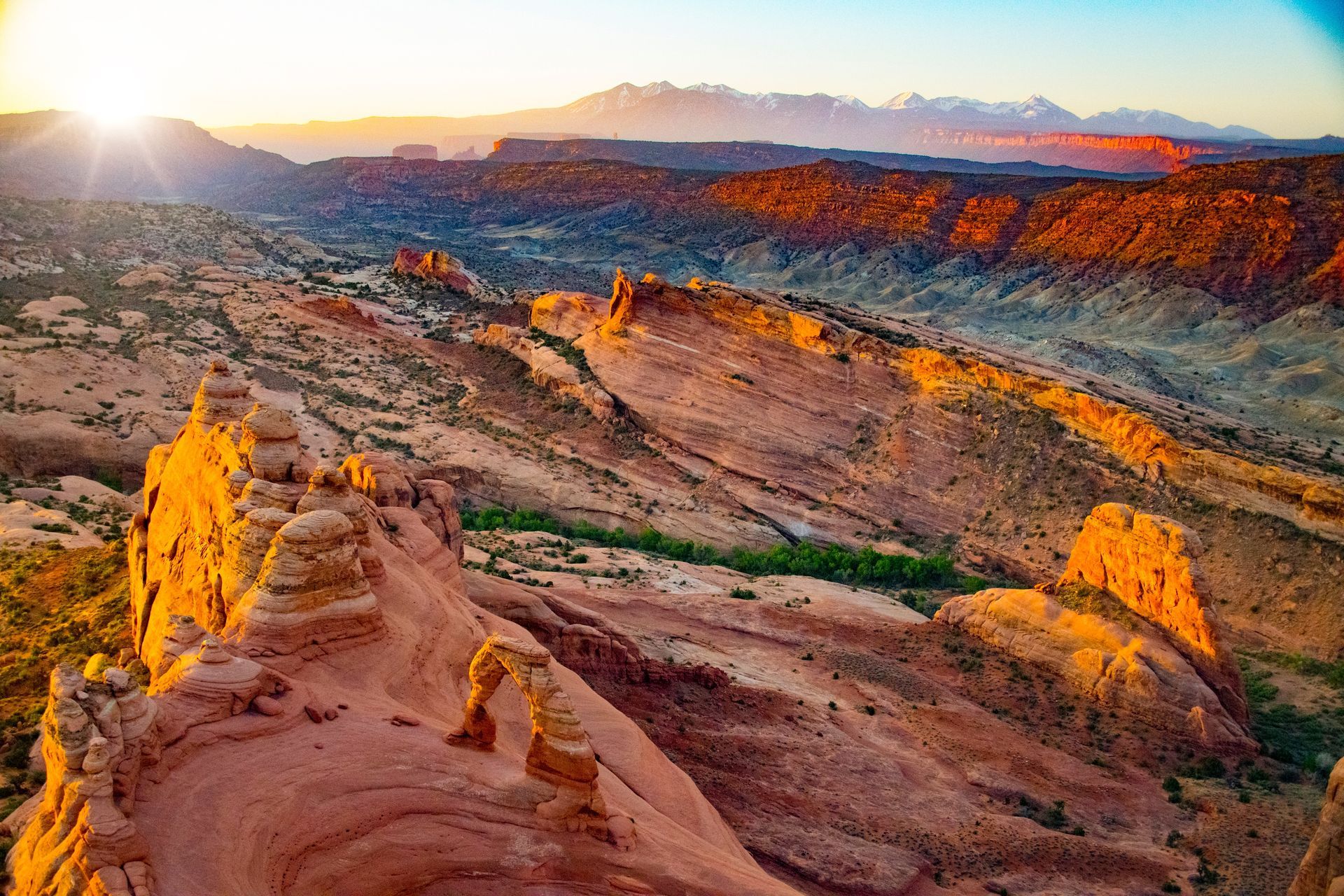
Soar above Arches in a scenic flight that reveals its hidden formations, sweeping vistas, and jaw-dropping beauty, all without the heat, crowds, or hiking.
- Duration: ~30 minutes
- Departures: 9am to 2pm
- Season: Year Round
ADULTS 13+
$208
YOUTH 3-12
$208
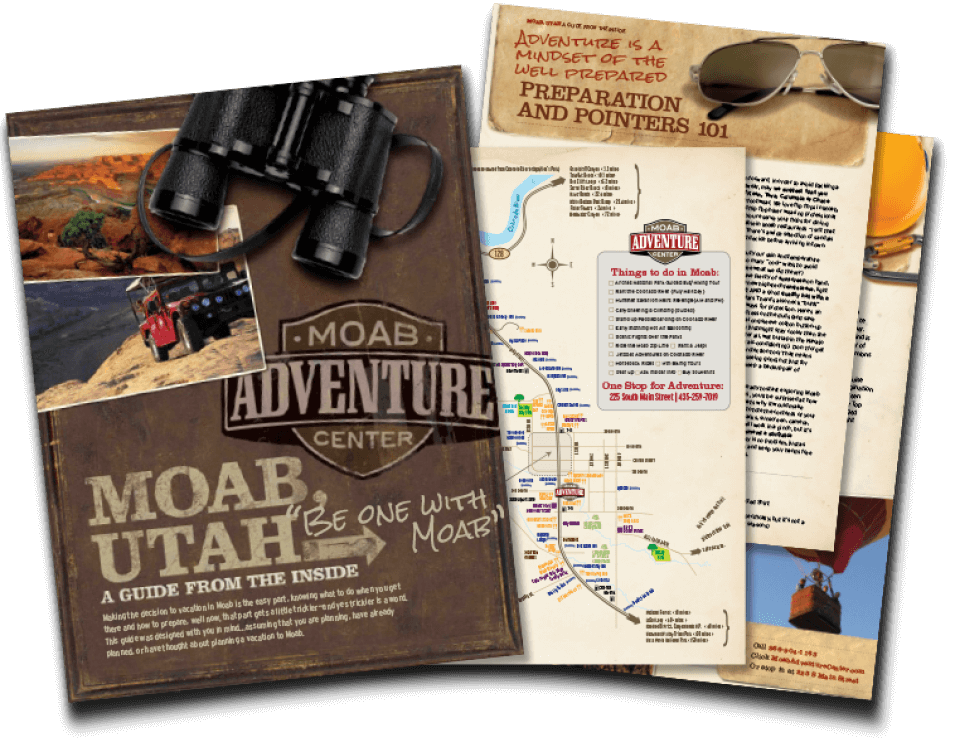
GET THE FREE MOAB INSIDER'S GUIDE!
BECOME A MOAB INSIDER
With our Moab Insider's Gide and email series, you'll get local tips on the best dishes at restaurants, hidden adventures that most people miss, tips on when to visit, and a few more secrets on the side. Get all the essentials for the perfect Moab experience.
Free. Instant download. Unsubscribe anytime.
⭐️⭐️⭐️⭐️⭐️ 7,000+ 5-Star Reviews | 22-Time Best of State Winner


